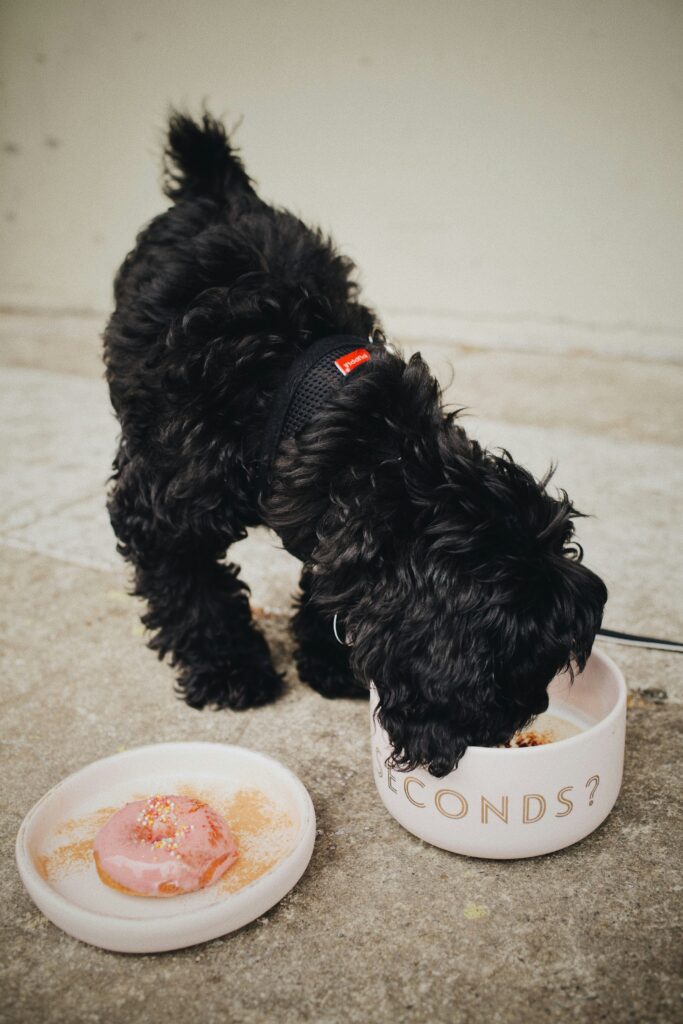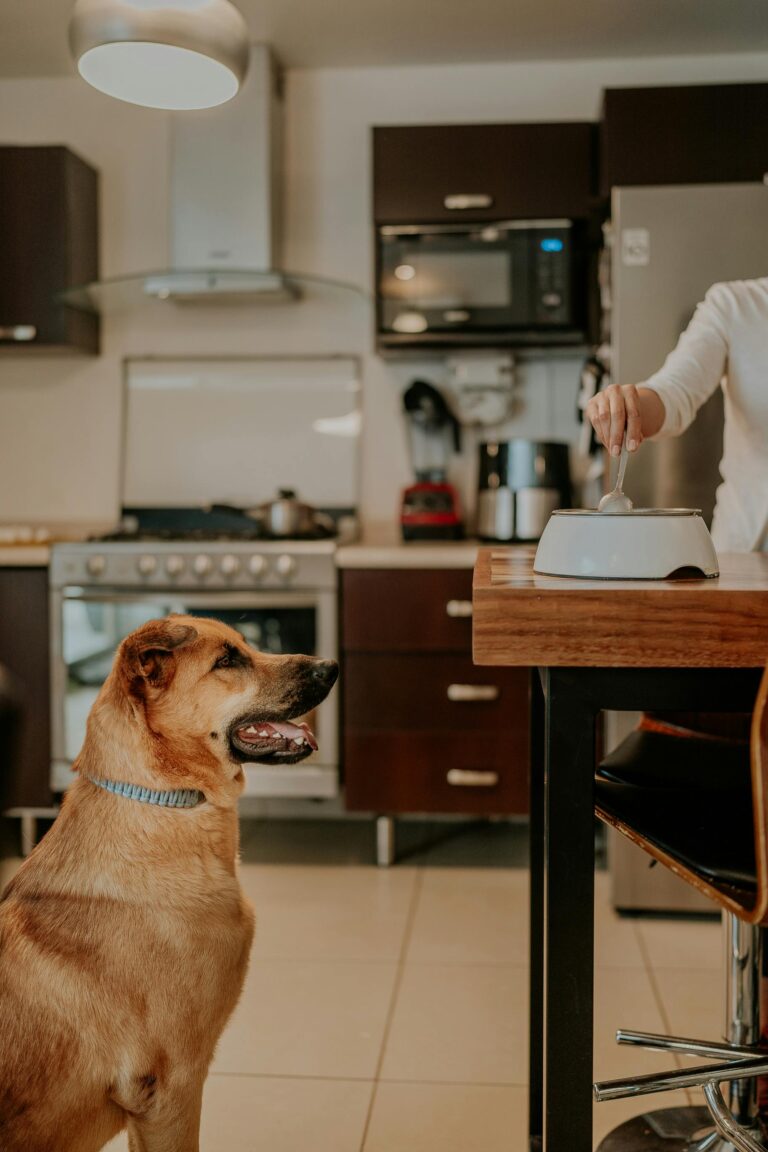More Articles Why Is My Dog Scratching So Much? Dog...
Read More
Control: You decide the protein, carbs, and fats. No fillers, dyes, or vague “meat meals.”
Simplicity: Fewer ingredients make it easier to spot what works.
Freshness: Human-grade ingredients often mean better digestion and energy.
Personalization: You can create the best homemade dog food for allergies for your dog’s unique needs.
When dogs have chronic allergies, commercial foods can feel like guesswork. Homemade recipes eliminate that uncertainty and allow you to directly test different proteins or grains. Owners often find that within a few weeks of switching, dogs show brighter eyes, less redness on their bellies, and calmer energy. Beyond allergy control, many pet parents also notice improved appetite and excitement during mealtime. This emotional bond—knowing you’re cooking for your dog—adds another layer of trust and joy between you and your furry companion.
Choose gentle, commonly tolerated foods. These options not only reduce the risk of allergic reactions but also provide essential vitamins, minerals, and nutrients your dog needs for healthy growth and daily energy. Try to combine protein, carbs, and vegetables in balanced proportions so every bowl is both delicious and nourishing:
Adding variety from this list ensures your dog gets complete nourishment while avoiding common allergens. You can rotate proteins every few weeks—such as alternating between turkey and salmon—so your dog doesn’t develop sensitivities to a single food. Many owners prepare base mixes of rice and vegetables and add a rotating protein on top, which makes planning meals easier.

Move slowly over 7–10 days:
Days 1–3: 25% homemade, 75% old food.
Days 4–6: 50/50.
Days 7–10: 75% homemade, 25% old food.
After day 10: 100% homemade if stools are formed and your dog is comfortable.
Watch for improvements: less scratching, calmer skin, better stool quality, more consistent energy.
Transitioning too fast can result in diarrhea, gas, or refusal to eat. Always adjust based on your dog’s age and sensitivity. Puppies, for example, may need slower transitions since their digestive systems are still developing. Senior dogs can also be more sensitive to sudden changes. If you notice ongoing soft stools, pause at the current transition stage for a few more days before increasing the homemade portion. Patience is key for long-term success.
Every dog is different, but a simple starting point is 2–3% of ideal body weight per day split into two meals.
Example: a 10 kg dog may eat about 200–300 g of food daily. Active dogs often need more. Tiny dogs often need more calories per kilogram. For precise balance of vitamins and minerals, speak with your vet. Many owners add a daily omega-3 and a calcium source approved by their veterinarian.
Homemade meals provide freshness but may lack certain micronutrients when served long-term. Calcium, zinc, vitamin E, and iodine are common nutrients missing from purely home-cooked diets. To prevent deficiencies, many vets recommend either a complete supplement formulated for dogs or rotating safe whole foods such as sardines (for calcium and omega-3s) or kelp powder (for iodine). Proper balance ensures your dog thrives rather than just survives.
Each recipe is designed as a gentle, hypoallergenic dog food option. Keep seasonings out—no salt, onion, garlic, or spices. Cool completely before serving. Store portions in airtight containers for up to 3–4 days in the fridge, or freeze for up to two months.
Best for: itchy skin and sensitive digestion.
Yield: about 4 cups (varies with potato size).
Ingredients
500 g lean ground turkey (unseasoned)
1 large sweet potato (about 350 g), peeled and diced
1 cup chopped spinach (fresh or frozen)
1 tbsp olive oil
Optional: 1 tsp ground flaxseed
Instructions
Steam or boil the sweet potato until tender. Drain well.
Brown the turkey in a non-stick pan over medium heat until fully cooked. Break into small crumbles.
Stir in spinach until wilted.
Combine turkey, mashed sweet potato, and olive oil. Mix in flaxseed if using.
Cool, portion, and serve.
Why does it works?
Turkey is a common “novel” protein for dogs with chicken sensitivities. Sweet potato provides steady energy and fiber that is gentle on the gut. Olive oil and flaxseed add skin-supporting fats.
Storage & serving tips
Refrigerate in 2–3 day portions; freeze the rest.
Warm slightly before serving to increase aroma.
Add a splash of warm water for dogs that prefer softer textures.
For picky eaters, mash everything together so the flavors blend evenly.
Best for: skin health and coat shine.
Yield: about 4 cups.
Ingredients
450 g boneless salmon fillet, skin removed
1 cup dry quinoa, rinsed
½ cup peas (fresh or frozen)
1 tbsp coconut oil
Instructions
Rinse quinoa thoroughly and cook according to package directions.
Bake or steam salmon until it flakes easily. Remove any remaining bones.
Mix warm quinoa, flaked salmon, and peas. Stir in coconut oil.
Cool fully before serving.
Why it works
Salmon offers omega-3s that help calm itchy skin. Quinoa is a gluten-free seed with complete protein and good digestibility for many sensitive dogs.
Storage & serving tips
Refrigerate for 3–4 days or freeze portions.
If your dog is new to fish, start with small amounts and observe stool and skin.
You can also substitute trout or whitefish if salmon isn’t available. Just ensure bones are removed completely.
Try lightly blending the mixture for senior dogs with dental issues.
Best for: sensitive stomachs and firming stools.
Yield: about 5 cups.
Ingredients
500 g lean lamb, cubed
1 cup pumpkin purée (plain, no sugar)
½ cup diced carrots
1 cup cooked brown rice
1 tsp olive oil
Instructions
Sear lamb in a pan until browned and cooked through.
Add carrots and a splash of water. Simmer until tender.
Stir in pumpkin purée and cooked rice. Finish with olive oil.
Cool completely, then portion.
Why it works
Lamb is a useful alternative when beef causes flare-ups. Pumpkin and rice are gentle on digestion and can help achieve regular, formed stools.
Storage & serving tips
Freeze individual portions for easy use during busy weeks.
Add green beans or peas occasionally to vary texture.
For extra hydration, mix in a spoon of cooled, unsalted bone broth.
Omega-3 oil (fish or algae) – supports skin and reduces inflammation.
Probiotics – promote balanced digestion.
Turmeric paste – some owners use tiny amounts for additional anti-inflammatory support. Ask your vet first.
Calcium – only with veterinary guidance; powders vary and overdosing is harmful.
Adding boosters is a way to customize meals based on your dog’s current needs. For example, during winter, dogs often benefit from extra omega-3s to combat dry skin. After antibiotic treatment, probiotics can help restore gut health. Always add one booster at a time so you can track its effect clearly.
Less scratching and paw licking
Fewer ear infections and hot spots
Better stool quality and less gas
Shinier coat and steadier energy
Other positive signs include improved breath, stronger nails, and more enthusiasm during play. Allergies drain energy because the body is in constant inflammation; once those triggers are removed, dogs often appear happier and more playful.

Symptoms worsen or new signs appear (vomiting, hives, facial swelling).
Your dog loses weight or appetite.
You suspect multiple food triggers.
You need a fully balanced long-term plan. A veterinarian or board-certified nutritionist can build a complete, custom hypoallergenic diet.
Even with the best homemade diet, some allergies are environmental (like pollen or dust mites). If symptoms persist despite diet changes, a vet can test and recommend treatments such as antihistamines or allergy shots.
Batch cooking: Pick one day a week to cook a large pot for freezing.
Portion control: Use meal-size freezer containers or silicone trays.
Labeling: Write the recipe and date. Rotate older portions to the front.
Consistency: Dogs thrive on predictable meals and portions.
Kitchen tools: Slow cookers or pressure cookers make large batches easier and keep nutrients intact.
Planning meals in advance saves stress and ensures your dog always has safe, allergy-friendly food ready. Many owners set aside Sunday afternoons as “meal prep time” for their dogs, just like they would for their families.
5 kg dog: ~120–160 g total food per day split into two meals.
10 kg dog: ~200–300 g per day.
20 kg dog: ~400–600 g per day.
30 kg dog: ~600–900 g per day.
Adjust up or down based on body condition: you should feel ribs with light pressure and see a waist from above. If weight changes by more than 5% in a month, review portions with your vet.
To fine-tune portions, track not only weight but also stool quality and energy levels. Overfeeding can cause loose stools, while underfeeding may lead to lethargy. Active breeds like Border Collies will naturally need more calories than calmer breeds like Bulldogs at the same weight.

Do cook meats thoroughly and remove bones.
Do cool food quickly and store in shallow containers.
Do wash bowls daily and keep prep areas clean.
Don’t use onions, garlic, chives, raisins, grapes, chocolate, xylitol, alcohol, or salty broths.
Don’t add multivitamins meant for humans unless your vet approves.
Don’t switch proteins every day while you are testing allergies—stay consistent.
Food safety is one of the most overlooked parts of homemade diets. Dogs can get food poisoning too, so hygiene matters. Always wash vegetables thoroughly, cook meats to safe temperatures, and discard food that smells off. If you freeze meals, label them with clear dates to avoid confusion.
Create a one-page log with date, recipe, portion size, stool score (1–5), itch score (1–5), and notes. After 3–4 weeks you’ll see patterns: which hypoallergenic dog food recipes give the calmest skin and most regular stools. This makes conversations with your vet faster and more productive.
Digital options like spreadsheets or pet care apps can make logging easier. Some owners even take weekly photos of their dog’s skin or coat to visually track improvements. Combining notes and pictures provides a clearer picture of progress over time.
Homemade dog food recipes for allergies can be a game-changer. With careful transitions, clean ingredient lists, and consistent observation, you can reduce flare-ups and help your dog feel comfortable again. Start with one recipe, keep notes on stool, skin, and energy, and adjust the plan until you find the fit that works. If you need a fully balanced diet, partner with your veterinarian for a safe, sustainable routine.
For dog owners who want reliable veterinary sources for dog food allergies, here are some trusted organizations and expert references. These links provide additional reading on symptoms, safe ingredients, and balanced homemade diets:
Sale
Adopt Smart
More Articles Why Is My Dog Scratching So Much? Dog...
Read MoreAugust 12, 2025 9:10 pm Does your dog seem itchy...
Read MoreEmpowering dog owners with proven solutions for allergies, nutrition & overall dog health.
© Copyright 2025 My PupEase –
All Rights Reserved.
We noticed you're visiting from United States (US). We've updated our prices to United States (US) dollar for your shopping convenience. Use Euro instead. Dismiss